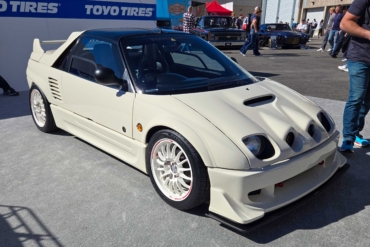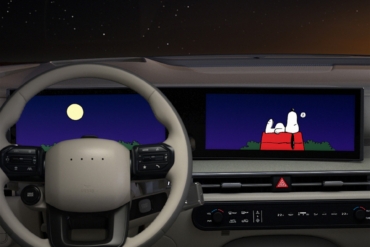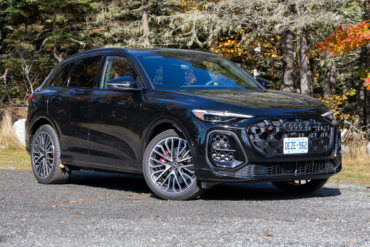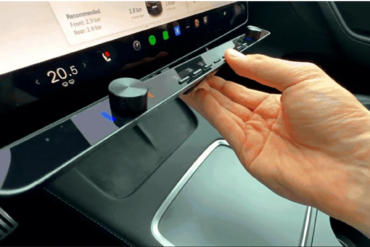Vehicle-based adventure doesn’t have to break the bank. Follow a few simple rules to build a budget off-road vehicle for adventure.
Overlanding adventures can be the stuff of dreams — highly modified and rugged vehicles accessing remote terrain with participants enjoying wine and cheese at the end of a long day.
But a quick perusal of off-road media or a walkthrough of an overland expo quickly reveals the money side of such joys. Expensive modifications and gear abound. But the Richie Rich route isn’t the only way.

I recently experienced an overland trip up and down the Baja peninsula with Dometic. New-model vehicles with heavy modifications, some totaling over $80,000 in value, were the norm.
And they were impressive. But I was assigned to ride along in a 22-year-old vehicle that had a total cost of less than any of my current bicycles. And we went to the same places and had just as much fun, proving that overlanding doesn’t need to break the bank.
Budget Overland Vehicle: Go Used, Mind the Service
The vehicle belongs to Jalopnik’s reviews editor, Andrew Collins. His vehicle of choice started as a 1998 Mitsubishi Montero that had 179,000 miles that he bought for $3,500.
The Montero had a major service done at 155,000 miles and came with 33-inch BFG KO2 tires, worth roughly $1,200 alone, making the asking price attractive to Collins’ thrifty nature.
Modifications from this original stature were minimal. Collins replaced the wheels and tires with Konig Countersteer Type-X wheels and Cooper Discoverer AT3 tires to drop 10 pounds on each corner, greatly improving mileage and braking.
He also removed an aftermarket roof rack and bumper and sold them in another effort to raise fuel economy. Fresh fluids were in order, and, finally, Andrew built a sleeping platform (explained in the video below).
All in, Collins has $5,000 in his Montero; none of my admittedly high-end bicycles retail for this amount. We joked that his entire rig cost less than the rear swing-out bumper on one of the more extravagant vehicles on the Baja trip. And again, we drove everywhere the other trucks ventured.
The Reality: An Old Vehicle Can Measure Up
Where did the miserly Montero come up short? Hardly anywhere. The terrain the group tackled in Baja was moderate by my standards. High clearance, four-wheel drive, and airing down the tires were all required, but by no means were we crawling over boulders or fording rivers.
The Montero would surely struggle in more rugged terrain compared to the monster vehicles in the group, but not by much in my opinion.

We encountered dry, deep sand as well as washboard two-track, and both had us trailing the group. These were the two conditions that prompted Andrew to slow down, but we never lost sight of the last car in the caravan. Collins also didn’t push his vehicle on the highways, either. But again, we never missed a planned happy hour at the ramshackle bar of choice.
Camping was spartan; the Montero was strictly a one-person accommodation. I slept in a tent. We parked on beaches alongside rigs with luxurious rooftop tents or campers that housed two or more adults, but we all slept the same, as the lack of shore power evened the playing field.
I’ve always had a camper shell in a long-bed pickup, and I had to admit that I slept better solo in a tent than I ever had sharing a truck bed. And although we chose to cook outside, this is the only option with the Montero.

With 200,000-plus miles on the odometer, Collins and I both understood that we were more prone to mechanical failure compared to the late-model trucks in our group. But with the mechanical ability we possessed, the flipside was we were much more likely to be able to fix minor issues. 1998 technology has that advantage.
One important area and a focal point for Collins in which the Montero was superior was gas mileage. Collins has reported getting just shy of 20 mpg. There’s no way any of the other vehicles on our Baja adventure were getting anything close to that.
Conclusions: You Don’t Have to Spend a Mint
I’ve been building rigs since way before the term “overland” grew popular. I equated the extent of the modifications to freedom — I could go anywhere. And I was spending a lot of money and effort to ensure I would be able to cross almost any terrain, even if it made up only 10% of my actual driving.
This ability to survive the 10% made the 90% more costly, both in fuel and maintenance. But it also made the majority of driving more uncomfortable, as the overland rigs were also my daily drivers.
I’m learning that all this isn’t necessary or even desirable at times. Not only is it a financial matter, but it’s also a matter of taste. How do I want to experience the outdoors when doing so by vehicle?
It’s nice to have an overland vehicle with all the amenities. I could confidently cross any landscape, then enjoy camping in relative luxury. But I find it’s so satisfying to do more with less. The 1998 Mitsubishi Montero reminded me of this and why I like to do other adventures in a more minimalistic way.

Collins’ Montero is the overlanding vehicle made for the 90%. It can be a daily driver that gets 20 mpg, but it can go almost anywhere an overlander would want to journey, and do so for less than the cost of some aftermarket bumpers.
And the spartan setup forces the adventurer to operate outside and independently of the vehicle — a major selling point of any outdoor adventure.
So next time you ponder building an overlanding rig, don’t scoff at the minimal, low-cost alternatives. Not only can it save huge sums of money, but it can also elevate the overlanding experience.








